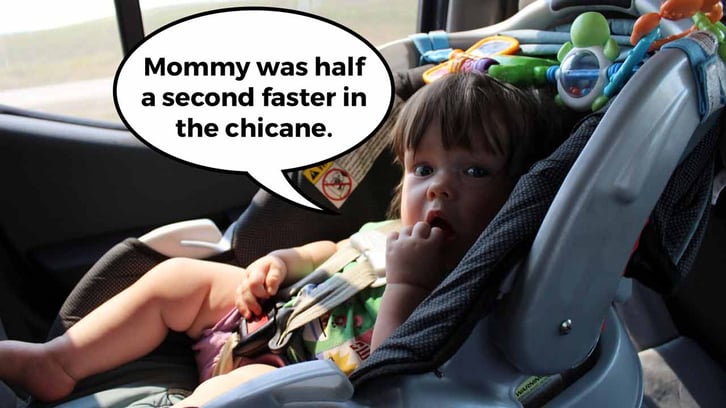Joseph A. Michelli’s recent book, Driven to Delight, is centered on the customer-centric transformation and ongoing customer experience strategy at Mercedes-Benz USA. After reading the book, I had a few questions about some of the content and strategies Joseph covered.
And here’s what resulted from the exchange.
George Jacob: Joseph, what compelled you to write about the customer experience transformation at Mercedes-Benz USA?
Joseph Michelli: I facilitated a benchmarking session with the CEO of Mercedes-Benz USA. In that session, I invited leaders from other brands with whom I have worked and written about (e.g., Zappos and The Ritz-Carlton Hotel Company) to join the Mercedes-Benz USA CEO. After that session, it became apparent to me the challenge facing the brand and the special leadership team poised to meet it.
I was fortunate to work with the company as it embarked on its multi-year journey to improve the experience customers were having in US dealerships, and I leveraged my vantage point to provide the content for the book.

At the onset of their transformation, Mercedes-Benz had the benefit of brand awareness. But not every company has the same clout. With that in mind, what are three takeaways for lesser-known brands trying to improve the customer experience?
George, what a great point about the clout and resources of a Mercedes-Benz. The interesting things for me is that almost everything Mercedes-Benz did during the transformation can be done on a much smaller scale and that Mercedes-Benz achieved their victories in a budget-neutral way. Here are 3 quick hits for your audience:
- Create the vision of success in customer transformation in words and pictures. Constantly refresh that message and engage your people in discussions about the purposefulness of improving the lives of those they serve.
- Realize deep change comes slow and often means that your people will have to give up something in order for the gains to occur and sustain. Help your people off-load some of the existing work, which ultimately adds little value to customers.
- Customer experience excellence is a two-fold endeavor. You must be operationally excellent to remove customer pain points and you must engage the hearts of your customers to drive emotional connections, loyalty, and referrals.
Luxury cars have a pre-purchase dynamic—historically driven by identity and product—that makes sales almost like recruitment. Has MBUSA’s shift from a product-centric to customer-centric experience changed that dynamic for them?
To use your phrase, Mercedes-Benz is still “recruiting.” In today’s marketplace, it’s important to connect products to lifestyle, and as you’ve noted, Mercedes-Benz has definitely connected people to a rich engineering tradition of innovation, safety, and a lifestyle of success.

That said, the shift toward customer centricity is assuring that the product is not let down by a lackluster dealership experience. Mercedes-Benz has a “craveable” product imbued with rich tradition and prestige… The dealership experience should bring the brand to life in every customer interaction, every time. No excuses!
You make a good point about MBUSA’s offering of a “craveable” product. How much of their sales process would you say is living up to the brand and the product potential buyers crave?
“Living up to” might have applied to how things were done a few years ago. But now the sales process mirrors what customers want. The consumer centricity of the brand and the changing customer have crafted today’s sales experience. The car is largely sold prior to a customer’s arrival. Thanks to the internet, consumers are savvy and just need a test drive and a quick purchase interaction that’s less than an hour long. The old days of bringing an offer to a “sales manager” in another room (who “will probably just not be able to make your offer work”) are long gone.
The mapping section of your book was interesting. MBUSA approached mapping by focusing on a customer’s evolving responses to “What car should I buy?” “How do I get the car I want?” “How do I get the most out of the car I acquired?” and “Will I buy a Mercedes-Benz again?” It’s clear Mercedes-Benz recognized how pre-sales and sales impacts the customer experience. Was this a big realization for them?
It truly was a mix of circular and linear elements. Most of the customer journey is linear. Awareness comes before purchase intent; purchase intent comes before purchase. But there are cycles. When you enter the latter phase of a lease, you are likely to be swept into the slipstream of a buying cycle. Your linear lease progress shifts into the buying cycle if “just in time” messaging is put before you.

You make an interesting point late in the book about focusing on the “lasting impact” of customer experience. Why do you think that is so important?
Customer experience is a journey, not a destination.
The pre-Socratic Greek philosopher, Heraclitus, purportedly said, “You can’t step into the same river twice.” Customers are like that river—they are constantly changing and evolving. If you seek time-limited success, you will become irrelevant. Swing for the fences and keep swinging.
What are the odds Mercedes-Benz has a free AMG lying around for a customer experience guy like me?
Well, since I’ve been hanging around, consulting with, and writing about them for a long time and my garage has not seen one appear yet… I would say you have a better chance winning the lottery and/or being struck by lightning.
If I said I really like my MINI, do you think that would help?
I’m sure they’d be happy to take your MINI in trade.
GJ: Thanks for reading. If you’re interested in getting a copy of Joseph A. Michelli’s Driven to Delight, you can purchase a copy here.
Image Credits:



